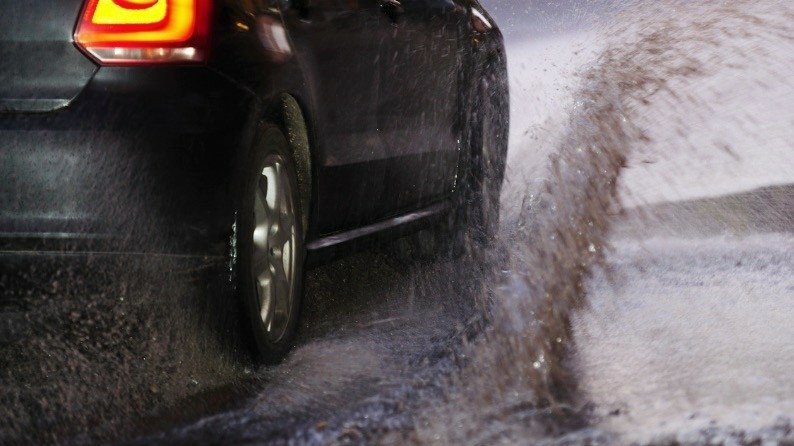Motorists Face £100 Fine For Soaking Pedestrians

According to the Road Traffic Act 1988, it is illegal for motorists to drive ‘without reasonable consideration for other persons’ and it also contains a ban on ‘driving through a puddle causing pedestrians to be splashed with water’.
Motorists face an on-the-spot fine of £100 if they are caught driving through water and splashing pedestrians on pavements. With this in mind, we have some advice on how to drive through water carefully and reduce the risk of aquaplaning on the roads.
How to drive through puddles safely:
1. Judge the depth: It can be difficult to judge the depth of water if you are approaching the puddle at speed or at night, but it is important to take into account the possibility of the puddle being deeper than you initially thought. Whilst smaller puddles will be fine, a larger section of water across a dual carriageway, for example, may lead to dangerous aquaplaning and loss of control of the vehicle.
2. Drive slowly: Speeding at any time is a risk to yourself and others, but it is especially dangerous in wet and rainy road conditions. Not only can driving at speed through water splash pedestrians, it can cause havoc with electrics in the car if the water is deep enough.
3. Be aware of aquaplaning: If your steering suddenly feels light, it is possible that the vehicle is aquaplaning. This happens when the water acts like a layer between the road and the tyres. Losing traction between the two and can easily cause loss of control of steering. To avoid this, slow down, avoid harsh braking and drive in the centre of the road where possible to avoid water collected at the sides of the road.
4. Test your brakes: After driving through standing water, it is important to test your brakes to ensure that they are still functioning effectively. Water can damage the rotors in the braking system,
5. Find an alternative route: If the body of water appears to be very deep or is moving, it can cause damage to your vehicle and may be a danger to drive through. This may happen on roads that are not smooth, have large potholes or at the dip of a hill where flooding is likely. If possible, find an alternative route to avoid this potential damage.
Our Founder and CEO Duncan McClure-Fisher CEO said:
‘With the recent storms that the UK has been dealing with, we would like to urge motorists to take into consideration other road users and pedestrians when driving on wet roads. Many drivers will be unsure how to drive safely in these often unpredictable conditions, but the key is to be prepared, always drive within the speed limit or slower if necessary and take care when driving after heavy rainfall.’






